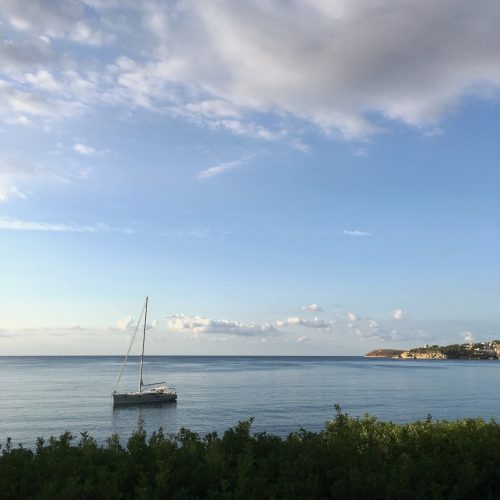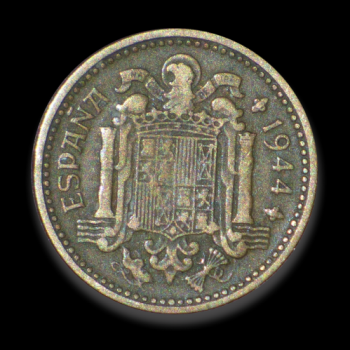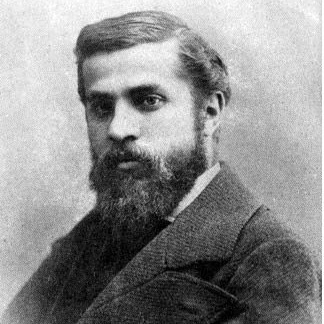
Who is Antoni Gaudí?
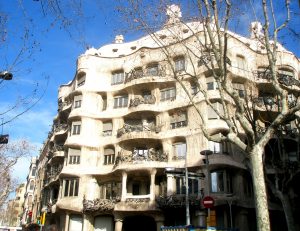
Dear Audrey,
Athough you may not be familiar with him, Antoni Gaudí is perhaps the most prolific architect to ever come from Spain. His work is often featured on travel blogs and in tourism photos, so you’ve probably seen much of it already. If you’ll be visiting Barcelona (or a few other places around Cataluña and the rest of Spain) you’ll want to know his story, influences, and legacy so let’s get you up to speed on the basics…
Who is he?
If you’ve visited Barcelona (or even seen photos of the city) you’ve likely come across the famous architect Antoni Gaudí’s work time and time again—hopefully not without realizing it! Whether or not you’re familiar with this Gaudí himself, you’re sure to remember a work of his if you’ve ever seen one. Gaudí was an incredibly unique architect, often recognized as one of the leaders of Modernism, who put excruciating importance into every detail of the structure, from the ironwork to the stained glass to the carpentry.
Born in the autonomous region of Cataluña (exact town under dispute) on June 25, 1852, much of Gaudí’s early years were spent contemplating nature at his family’s summer home in Ruidoms due to rheumatic problems that kept him for partaking in more active childhood activities. Alongside the hands-on experience he got assisting his father and grandfather in their coppersmith workshop, Gaudí’s fascination with nature is credited as one of the most important influences on his unique architectural style.
Gaudí regularly defied conventional architectural practices, such as his use of the ‘equilibrated system’ used in the construction of Casa Batlló and the Casa Milà. Through the ‘equilibrated system,’ he avoided the need for internal bracing or external buttressing, instead constructing diagonal thrusts and lightweight tile vaults, which gave both of these buildings the look of clusters of tile lily pads instead of traditional floors.
What should you know about him?
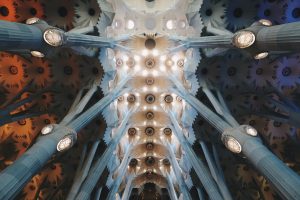
A revolutionary of his time, Gaudí was not always revered as such. In fact, when he studied at the Provincial School of Architecture in Barcelona (1868-1878, his studies were interrupted by military service) he generally did not receive high marks and regularly missed classes. After an assignment in which Gaudí was meant to draw a design for a cemetery gate and he instead submitted an intricate drawing of a hearse accompanied by sad bystanders (foregoing the gate altogether), the examiner declared that it was the work of “either a madman or a genius” and only time would tell.
It was not until the Paris World Fair in 1878 that he rose to fame, presenting a showcase so impressive that he was later commissioned for multiple buildings with the man who discovered him there, Eusebi Güell, who became a close friend of Gaudí. His early work was less outlandish than his latest (and arguably greatest) projects and this period of his life was accompanied by a “dandy” personality—meaning that Gaudí was a regular attendant of theaters, concerts, and tertulias (social gatherings) and always dressed in the best of high fashion. In stark contrast, his later years were rather bleak and tragic as he distanced himself from the social scene, disregarded his appearance altogether, and threw himself devotedly into his work.
Despite working on his great project, La Sagrada Familia, until his last days he never got to finish this endeavor, nor many of the other minor projects he was working on in his later life. The architect was run down by a streetcar in 1926 and the story goes that he suffered alone for days and was only recognized as the prolific architect by the priest of the Sagrada Familia who came to the hospital to give him his last rites. After his death, many of his projects and works were criticized and neglected for some time, particularly during the Civil War that followed. It was not until the 1950s that his reputation was resurrected by authoritative creatives of the time, such as Salvador Dalí and architect Josep Lluís Sert.
What are his ties to Spain and where can you find him?
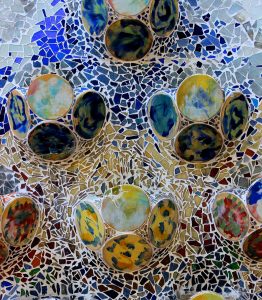
Barcelona is definitely the place to visit if you want an all-out Gaudí experience! Consider taking a Gaudí-specific tour if architecture is of special interest to you or you can pick out a few favorites from this top ten list. Our top recommendations include:
La Sagrada Familia (1882-?): The final work of Gaudí, for which he is perhaps most well-known internationally, is still yet to be finished! When he took over the project in 1883, he changed the plans completely and construction was only estimated to be a quarter finished at the time of his death. The project is set to be finished in 2026, the one-hundredth anniversary of the architect’s death
Park Güell (1900-1914): Commissioned by Gaudí’s dear friend, Eusebi Güell, the original intention was to create a “garden city,” divided into 60 plots to be sold among the bourgeois of Barcelona. However, only three were ever sold—two to the Trias family and one for the show-home which Gaudí eventually bought himself and is today an museum dedicated to the legendary architect.
Passeig de Gràcia: Wandering down this important street of Barcelona is something you’ll likely want to do regardless, but it’s also the right spot to find both the Casa Batlló (1904–06) and Casa Milà (1905–10), better known as “La Pedrera.”
There are only three works of Gaudí’s that can be found outside of Cataluña:
El Capricho de Comillas (1883-1885) in Santander: Built at a time in which the Arabian influence was strong in his work, this horseshoe-shaped building is worth a visit if you’re in the northern city.
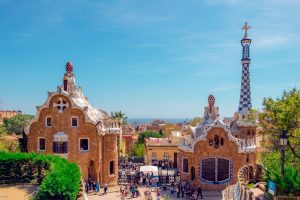 Casa Botines (1891-1892) in León: Built by Gaudí primarily due to Güell’s relationship with the promoter of the Casa Botines, this structure is far less ostentatious than the works of Gaudí you’re likely to visit in Barcelona.
Casa Botines (1891-1892) in León: Built by Gaudí primarily due to Güell’s relationship with the promoter of the Casa Botines, this structure is far less ostentatious than the works of Gaudí you’re likely to visit in Barcelona.
Cathedral of Mallorca (1903-1914) in Mallorca: Upon the request from Bishop Pere Campins for Gaudí to provide advice for restoring the internal layout and decor of the cathedral, Gaudí submitted a plan for extensive change that the bishop supported him in. However, Gaudí eventually left the project in 1914, before its completion, due to internal conflicts with the team.
Resources:
http://www.gaudiclub.com/ingles/i_vida/i_menu.html (Great, extensive detail into his life and works!)
https://www.biography.com/people/antoni-gaud%C3%AD-40695
https://www.casabatllo.es/en/antoni-gaudi/
https://www.dosde.com/discover/en/cathedral-of-mallorca/
https://en.wikipedia.org/wiki/Antoni_Gaud%C3%AD

